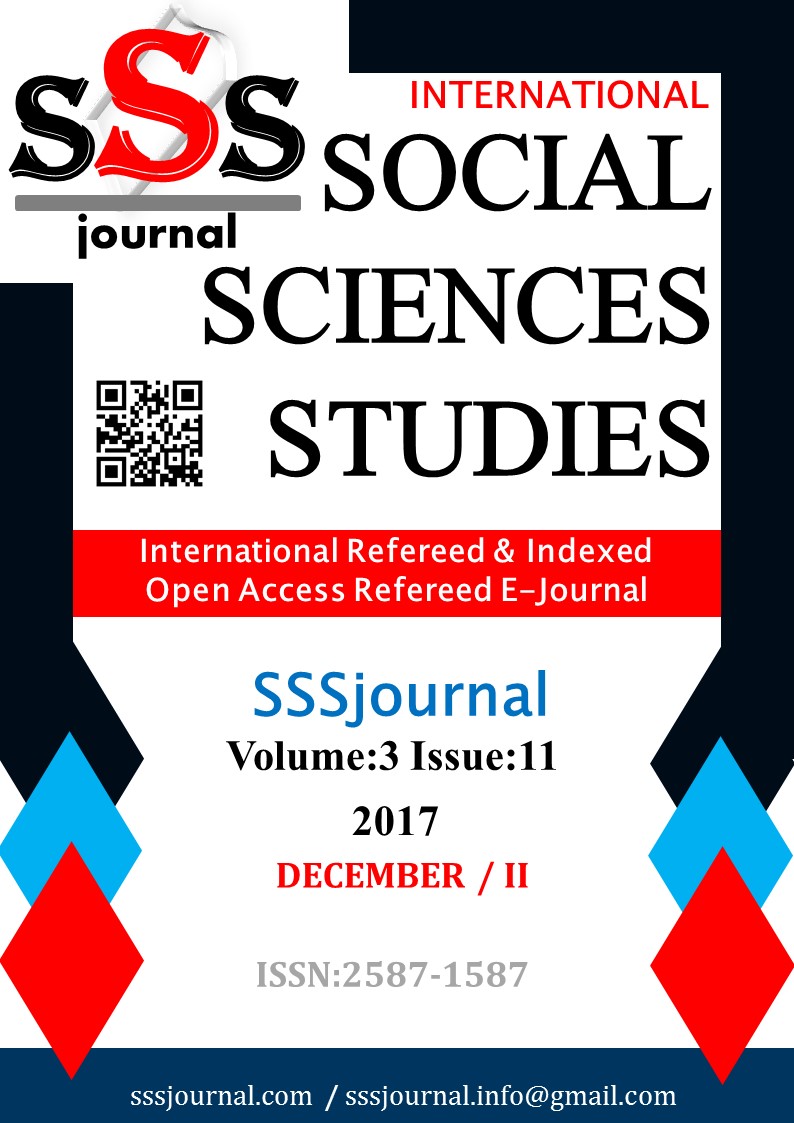Author :
Abstract
Bu çalışmanın üç amacı vardır. Birincisi, refah devleti ve vatandaşlık arasındaki ilişkisinin ortaya konmasıdır. Avrupa Birliği (AB) ülkelerinin vatandaşlarının vatandaşlık haklarını kazanmaları değerlendirilmişir. Vatandaşlık haklarının sivil, siyasal ve sosyal haklara dayandığı, bu üç hak olmadan vatandaşlık haklarının olmayacağı vurgulanmaktadır. İkincisi Avrupa Birliği (AB)’nin genişleme öncesi refah devleti modellerinin ortaya konmasıdır. Bu nedenle refah devleti modellerine Akdeniz refah devleti de eklenmektedir. Bu dört refah devleti modelinin özellikleri bu çalışmada açıklanmıştır. Ayrıca bu modeller arasında refah devleti arasındaki farklar ortaya konmaktadır. Üçüncüsü ise, AB’nin 2004 yılında doğuya genişlemesinin başlaması ve Orta ve Doğu Avrupa (ODA) ülkelerinin üye statüsü kazanmasıyla birlikte AB’nin refah devleti modellerine geçişteki refah devletleri de eklenmektedir. Geçişteki refah devleti modelini diğer refah devleti (dört) modellerinden ayıran özellikler ortaya konmaktadır.
Keywords
Abstract
This study has three purposes. The first one is the introduction of relationship between welfare state and citizenship. Citizens of European Union (EU) countries are assessed to gain citizenship rights. It is emphasized that citizensip rights are based on civil, political and social rights and there are no rights of citizenship without these three rights. Second is the introduction of EU pre-enlargement welfare state models. For this reason, Mediterranean welfare state is added to welfare state models in this study. The features of these four welfare models are explained in this study. In addition, the differences between these models in welfare state are revealed. The third is that welfare state in transition is added to EU welfare state models through the beginning of eastwards enlargement of the EU in 2004 and the gaining membership status of Center and East European (CEE) countries. The features that distinguish the welfare state model in transition from other (four) models are revealed.
Keywords
- Andreß, H.J. & Heien, Thorsten. (2001). “Four Worlds of Welfare State Attitudes? A Comparison of Germany,
- Andreß, H.J. & Heien, Thorsten. (2001). “Four Worlds of Welfare State Attitudes? A Comparison of Germany, Norway, and the United States”, European Sociological Review, 17(4): 337-356.
- Cerami, A. (2007). “Europeanization, Enlargement and Social Policy in Central and Eastern Europe”, Les Cahiers européens de Sciences Po, No: 01.
- Eigmüller, M. (2013). “Europeanization From Below: The Influence of Individual Actors on The EU Integration of Social Policies”, Journal of European Social Policy,. 23(4): 363–375.
- Esping-Andersen, G. (1990). The Three Worlds of Welfare Capitalism, Princeton University Press, Princeton- New Jersey.
- Esping-Andersen, G. (2002). “Towards the Good Society, Once Again?”, Why We Need a New Welfare State, (Ed. Gosta Esping-Andersen et al), ss. 1-25 Oxford University Press, New York.
- Ferreira, S. (2006). “The South European and the Nordic welfare and third sector regimes – how far were wefrom each other?”, Nordic civic society organisations and the future of welfare services A model for Europe?.(Ed: Aila-Leena Matthies), ss. 299-324, TemaNord 2006:517, Nordic Council of Ministers, Copenhagen.
- Fenger, H.J.M. (2007). “Welfare regimes in Central and Eastern Europe: Incorporating Post-CommunistCountries in A Welfare Regime Typology”, Contemporary Issues and Ideas in Social Sciences, August, 3(2): 1–30.
- Fuchs: & Offe, C. (2008). Welfare State Formation in the Enlarged European Union Patterns of Reform in the Post-Communist New Member States, Hertie School of Governance, Working Papers:14, April.
- Goul Andersen, J. (2012). Welfare States and Welfare State Theory, (Ed. Per H. Jensen), Working Paper,Centre for Comparative Welfare Studies (CCWS) Department of Political Science, Aalborg University, Aalborg.
- Gülcan, E. (2017a). Avrupa Birliği – Türkiye İşgücü Piyasalarında Esneklik ve Güvencenin Bağdaştırılması, Dora Basım-Yayın Dağıtım Ltd. Şti., Bursa.
- Gülcan, E. (2017b). “Avrupa Birliği’nde ve Türkiye’de Yeni Sosyal Riskler ve Sosyal Koruma”, Uluslararası Sosyal Araştırmalar Dergisi, 10 (51): 964-984.
- Hyman, R. (2008). Britain and the European Social Model: Capitalism Against Capitalism?, Working Paper: WP19, The Institute for European Studies, Bruxelles.
- Iversen, M. J. & Thue, L. (2008). Creating Nordic Capitalism – The Business History of A CompetitivePeriphery (Chapter : 1), (Ed. by Susanna Fellman, Martin Jes Iversen, Hans Sjogren and Lars Thue) , ss. 1-21, Palgrave Macmillan.
- Jensen, H. J. & Neergaard, L. (2005). “The Nordic model: A recipe for European success?”, (Ed. Carlos Buhigas Schubert ve Hans Martens), EPC (European Policy Center) Working Paper No. 20: 56-65.
- Kuivalainen: & Nelson, K. (2010). The Nordic Welfare Model in A European Perspective, (Working Paper No: 2010:11). Institute for Futures Studies, Stockholm.
- Lavoie, M. & Stockhammer, E. (2012). Wage-led Growth: Concept, Theories And Policies, Conditions ofWork and Employment Series No. 41, Conditions of Work and Employment Branch, International Labour Office (ILO), Geneva.
- Marshall, T. H. (1950). Citizenship And Social Class and Other Essay, Cambridge University Press, Cambridge.
- Mendelski, M. (2010). “The Varieties of Capitalism Approach Goes East: Institutional Complementarities andLaw Enforcement during Post-Communist Transition”, In What capitalism? Socio-economic change in CentralEastern Europe, (Ed. Alexandra Krause and Vera Trappmann), ss. 8-44, Proceedings of the Workshop the29/30 October 2009, Collaborative Research Centre 580 in Cooperation with the University of Osnabruck,London School of Economics and the Otto-Brenner Foundation, Iéna: Friedrich-Schiller-Universität Jena, Germany.
- Navarro, V. (1999). “The Political Economy of The Welfare State in Developed Capitalist Countries”, International Journal of Health Services, 29 (1): 1-50.
- Tache, I. & Neesham, C. (2010). “Is there an East-European social model?”, Journal of Social Economics, 37( 5): 344-360.
- Więcławski, J. (2010) “The Eastern Enlargement of the European Union: Fears, Challenges, and Reality”, Globality Studies Journal: Global History, Society, Civilization (GSJ), Issue: 15, 18 March: 4.





